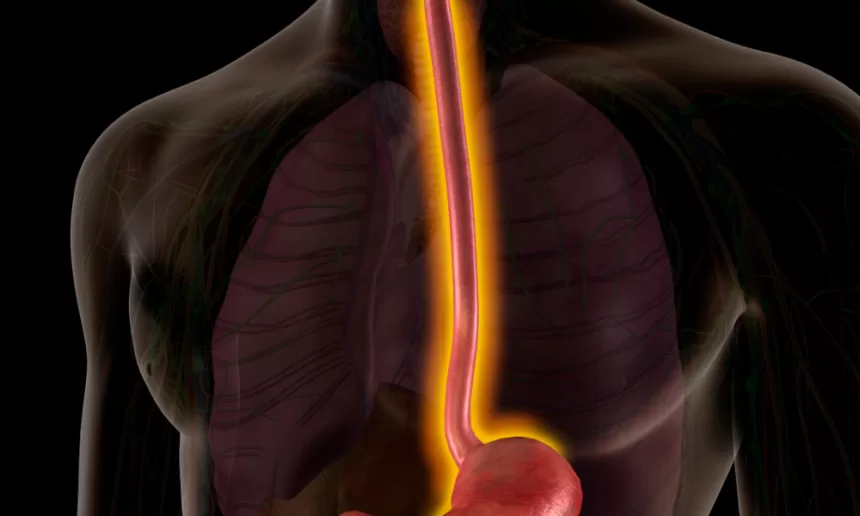Esophageal Atresia/Tracheoesophageal Fistula Repair
Introduction
Esophageal atresia and tracheoesophageal fistula are congenital birth defects wherein the esophagus and trachea do not mature correctly, leading to life-threatening sequelae in aspiration and ventilation. These defects are emergency medical requirements with suture repair being carried out in the first few hours of life. This article will discuss what EA and TEF are, provide the rationale for the need for surgical correction, and explain to patients and caregivers what to expect regarding the treatment pathway.
What is Esophageal Atresia/Tracheoesophageal Fistula Repair?
Esophageal atresia is a congenital malformation in which the tube connecting the throat and stomach, the esophagus, terminates in a blind pouch and does not communicate with the stomach. A tracheoesophageal fistula is a pathological opening between the trachea and the esophagus. These two conditions frequently occur together and can lead to severe complications, including difficulty breathing, feeding, and swallowing.
In surgical repair, the esophagus is reconnected, tracheoesophageal abnormalities are sealed shut, and the infant can both swallow and breathe unhindered.
Why is Esophageal Atresia/Tracheoesophageal Fistula Repair Needed?
Repair is critical not only for the infant’s life but also for his/her quality of life. Neonates having these diagnoses would experience complications, including, for instance:
- Aspiration pneumonia due to food and fluids entering the lungs
- Malnutrition due to feeding difficulties
- Chronic respiratory issues
- Potential death if left untreated
This operation can give a chance for natural feeding and maturation and improve dramatically long-term health outcomes.
Types of Esophageal Atresia/Tracheoesophageal Fistula
Several types of EA and TEF are available depending on the defect’s nature and position. They are sorted by a letter system, with Type A being the simplest and Type E being the most severe.
- Type A: Esophageal atresia without a fistula.
- Type B: Esophageal atresia with tracheoesophageal fistula (EAF) that bypasses the level of the upper esophageal sphincter.
- Type C: The most frequent form, in which the base of the esophagus opens at the trachea, and the head opens into a blind pouch.
- Type D: Esophageal atresia with two tracheoesophageal fistulas.
- Type E: A very long segment of trachea and esophagus that fused, and thus needed a long surgical approach.
Procedure Steps for Esophageal Atresia/Tracheoesophageal Fistula Repair
The procedure typically involves the following steps:
- Preoperative Assessment: The health of the child, both globally and in terms of imaging and tests, is assessed to identify which type of EA/TEF it is.
- Anesthesia and Positioning: The infant is intubated and positioned for surgery under general anesthesia.
- Surgical Repair: The surgeon disconnects any fistulas between the trachea and esophagus and connects the esophagus if it is not already intact.
- Post-Operative Care: Postoperatively, a baby resides in the neonatal intensive care unit (NICU) and is observed for signs of complications such as infection or leakage from the surgical site.
- Feeding and Rehabilitation: After the infant is stabilized, a feeding program is started to normalize the baby’s feeding.
Benefits of Esophageal Atresia/Tracheoesophageal Fistula Repair
- Improved Survival: Per the immediate surgical correction, the respiratory and feeding functions of the ant are maintained and secured.
- Normal Development: Surgery can help to allow breastfeeding in infants and respiration to be uncompromised with improved growth and development.
- Long-Term Health: Percutaneous successful repair can avoid late respiratory complications and restore normal digestive function.
Cost of Esophageal Atresia/Tracheoesophageal Fistula Repair
- India: $4,000 to $7,000.
- United States: $20,000 to $40,000.
- United Kingdom: $20,000 to $25,000.
Best Hospitals in India for Esophageal Atresia/Tracheoesophageal Fistula Repair.
Below are some of the leading hospitals in India providing state-of-the-art treatment for esophageal atresia and tracheoesophageal fistula repair.
- Metro Hospital, Faridabad
- Fortis Memorial Research Institute, Gurgaon
- Indraprastha Apollo Hospital, Delhi
Risks and Complications of Esophageal Atresia
While the surgery is usually successful, there are some risks and complications, such as:
- Infection: As with any major surgery, there is a risk of infection.
- Leakage at the Surgical Site: Sometimes, the connection between the esophagus may leak.
- Recurrent Respiratory Problems: Breathing problems may persist following surgery in some children.
- Feeding Problems: Even though most children make a full recovery, a subset of children can develop lifelong feeding-related problems.
Recovery from Esophageal Atresia/Tracheoesophageal Fistula Repair
- Initial Recovery: Health supervision of the neonate occurs through admission to the NICU for recovery.
- Post-Operative Care: The hospital may require admission for several days or weeks, based on the outcome of surgery.
- Feeding Rehabilitation: When the child is stable, the caregivers implement a feeding program to allow the child to feed orally.
- Follow-Up: Healthcare providers require regular follow-up visits to assess the growth, respiration, and general development of the child.



